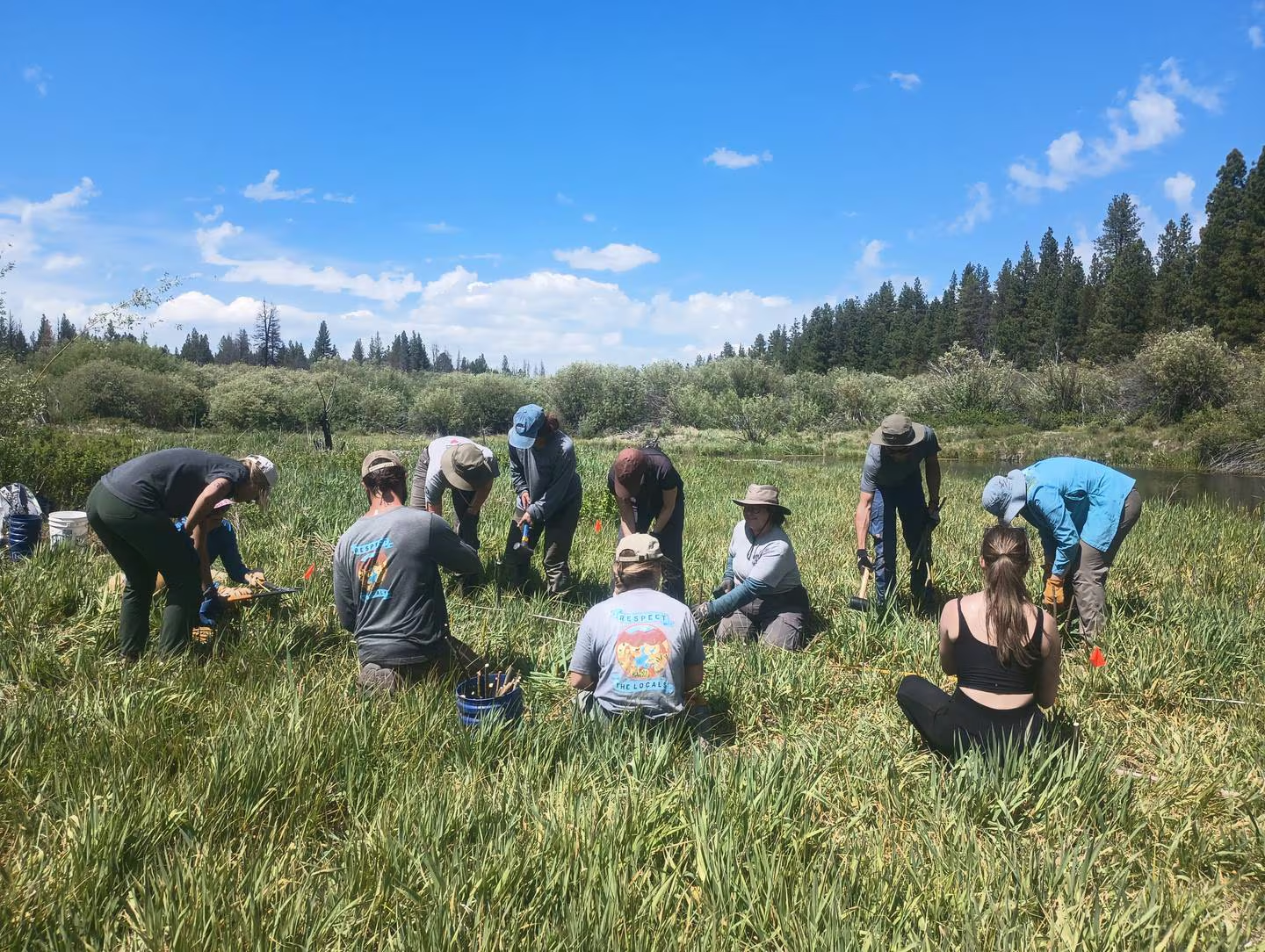I was very impressed to read this article. You will be too.
 Beaver Works Oregon plants over 5,000 trees to support beaver habitat in Central Oregon
Beaver Works Oregon plants over 5,000 trees to support beaver habitat in Central Oregon
Beaver Works Oregon, a program of Think Wild dedicated to supporting beaver in Oregon’s high desert, recently planted and fenced off 5,180 willow, cottonwood and assorted riparian plants at both public and private riparian project sites throughout Central Oregon this Spring. The goal is for the plants to establish and provide essential beaver habitat that supports beaver population recovery and associated ecosystem benefits.
Led by Beaver Works Oregon Program Manager Dr. Maureen Thompson, the team recruited, trained and led over ninety volunteers for a collective 800 hours of willow and cottonwood stick harvesting, planting, fencing and monitoring efforts. Planting sites included private land along the Little Deschutes in La Pine, Lake Creek Lodge in Camp Sherman and La Pine and Collier Memorial State Parks. Beaver Works Oregon will continue to monitor the sites through annual visits and will remove the fencing after the plantings have a chance to establish.
Well done! You know what they say, “If you plant it. they will come.”
“Volunteers were integral throughout the process,” said Dr. Thompson. “Willow and cottonwood cuttings were collected and stored in the winter. When spring came, volunteers at the sites trimmed the sticks, drove metal stakes into the ground to plant them along the river, placed cardboard and mud around the plantings to create ideal conditions for growth and put up fencing to protect the plots from disturbances. Trail cameras were also set up to observe wildlife near the sites.”
Beavers are a keystone species, and their activity in stream ecosystems leads to greater biodiversity and increased drought, flood and fire tolerance. For beaver to establish in an area, there need to be plentiful riparian trees, like willow, aspen and cottonwood, for food, shelter and dam-building. Due to various anthropogenic stressors, though, many areas in Central Oregon host to these essential riparian plants have been degraded and are unable to sustain beavers.
You know I’m so old that I remember when the SF waterboard worked with the watershed stewards from Americorps to plant willow and dogwood stakes in Alhambra Creek with the city engineers blessing and the head of public works objected and made city staff pull them all out again.
And then when the riot act was read to them they had to put them back. But UPSIDE DOWN.
Fun times.
By working with landholders to identify project sites and then leading volunteer crews to harvest and plant cuttings of willow and cottonwood trees near rivers and streams, Beaver Works Oregon works to restore the habitat that beavers need to succeed. These community-based activities not only contribute to the restoration of ecosystems crucial for beavers but also provide opportunities for students and adults to “recreate for good,” working, camping and learning about beaver habitat, healthy ecosystems and working lands.
Congratulations on a very successful planting.






































